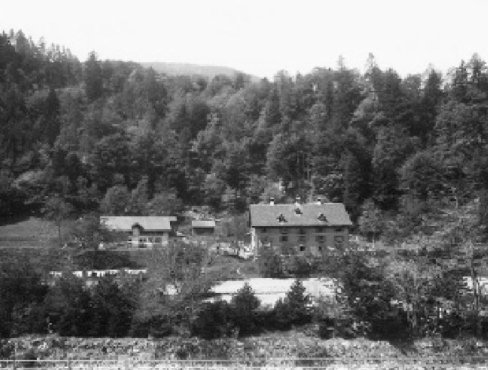The Churer Totengut
Today, the Totengut crematorium and cemetery is located on Sandstrasse in Chur. The name "Totengut" or "Totengüatli" goes back to the time when the plague was rampant in Chur in the 16th century and the dead were burned there. The field name "Todtengut" already appears on the minster map of 1878; in addition a building and two small buildings are marked, on the opposite side of the river a bath.
The building had been erected in 1821/22; needy families and single people could live there free of charge. In 1833, in addition to the overseer's family, 44 people found shelter there, including a family with seven children.[16]
The house was called "Bürgerheim" in the early 20th century and took in so-called poor people. Photos from that time show individual buildings of different sizes on the site. The owner of the property, the Bürgergemeinde Chur, then agreed to cede it for the construction of a crematorium, which was completed in 1921.[84]
Impressum und rechtliche Hinweise

The Churer Totengut with the old superstructure, c. 1915. Photo Lienhard & Salzborn (StAGR, FN IV 13/18, C 205).
Sources:
16: Churer Stadtgeschichte, Ursula Jecklin, 1993, StAC, Stadt Chur
84: Das Churer Totengut, Leza Dosch, 2013, Bündnerisches Monatsblatt
- The house at Bärenloch 8
- The Churer Totengut
- Chur 1893